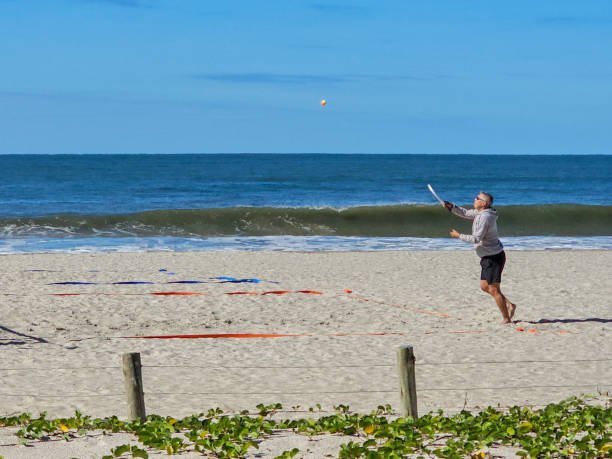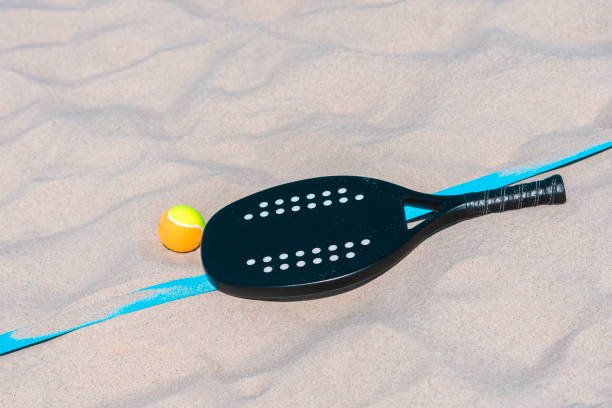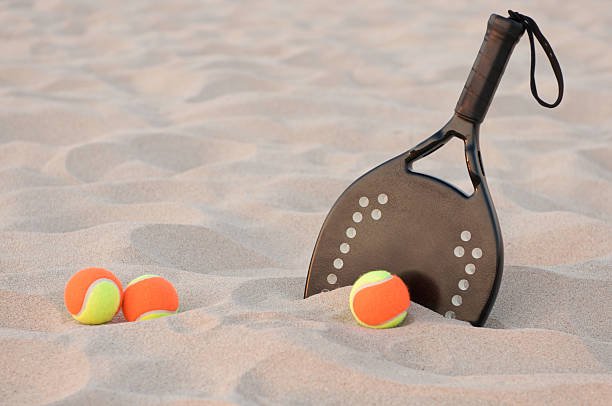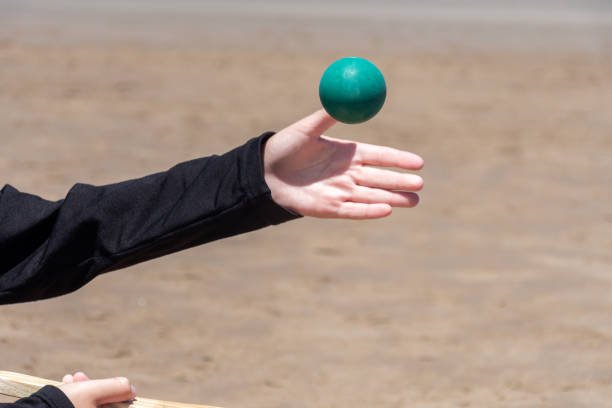Beach tennis is a sport that combines competition with leisure, rapidly gaining popularity worldwide. This sport not only provides a great workout but also allows players to enjoy the sun and sand. Choosing the right beach tennis racket is essential for improving your skills and enjoying the game. With a plethora of options available, how can you find the perfect racket for yourself? This article will delve into the key factors to consider when selecting a beach tennis racket, helping you make an informed decision.
Why Choose the Right Beach Tennis Racket?

Many people may not realize the impact that the right racket can have on their sporting experience. A suitable racket can enhance your skills and increase your enjoyment of the game. Here are a few reasons to select the right one:
Improve Skill Level
A suitable racket can help you master hitting techniques, increasing your accuracy and power. For beginners, the right racket can reduce errors, making the learning process smoother.
Enhance Comfort
Choosing the right grip size and weight can reduce hand fatigue, making the game more enjoyable. A suitable racket helps minimize energy expenditure during swings, allowing you to play longer without feeling tired.
Boost Confidence
Using a high-performance beach tennis racket can increase your confidence in matches, allowing you to perform at your best. Increased confidence enhances both your performance and enjoyment of the sport.
Key Factors to Consider When Choosing a Beach Tennis Racket
Weight and Balance
- Weight: Beach tennis rackets typically range from 250g to 350g. Lighter rackets (250g to 290g) are ideal for beginners and players needing agility, as they allow for quicker swings and responses. Heavier rackets (290g and above) provide better stability and power, suitable for more experienced players.
- Balance: The balance point of the racket is also crucial. Rackets can be classified into three types:
- Head-Heavy: Suitable for players seeking powerful shots, enhancing hitting strength.
- Handle-Heavy: Offers better control and maneuverability, perfect for quick reactions.
- Even Balance: Provides a mix of power and control, suitable for various playing styles.
Key Factors to Consider When Choosing a Beach Tennis Racket

Weight and Balance
- Weight: Beach tennis rackets typically range from 250g to 350g. Lighter rackets (250g to 290g) are ideal for beginners and players needing agility, as they allow for quicker swings and responses. Heavier rackets (290g and above) provide better stability and power, suitable for more experienced players.
- Balance: The balance point of the racket is also crucial. Rackets can be classified into three types:
- Head-Heavy: Suitable for players seeking powerful shots, enhancing hitting strength.
- Handle-Heavy: Offers better control and maneuverability, perfect for quick reactions.
- Even Balance: Provides a mix of power and control, suitable for various playing styles.
Materials and Construction
The materials and construction of a beach tennis racket directly influence its durability and performance. Common materials include:
- Carbon Fiber: This material is lightweight and strong, providing excellent feedback on hits, making it ideal for professional players. Its elasticity allows better energy transfer to the ball.
- Fiberglass: A cost-effective option for beginners. Although heavier, it still offers good control and comfort.
- Aluminum Alloy: Relatively heavier and suitable for budget-conscious players, known for its durability.
Modern rackets often feature thin-frame designs, which reduce weight and increase swing speed, making hitting easier. Consider how these materials affect performance when making your purchase.
Racket Head
The size and shape of the racket head directly impact hitting performance. Larger heads (105 square inches and above) provide a bigger hitting area, reducing errors, while smaller heads cater to players seeking precise control, allowing for more technical shots.
Racket shapes can vary; some use traditional round designs, while others may have unique shapes affecting shot angles and rebound effects.
Grip Size
The grip size and shape significantly affect comfort while holding the racket. Selecting a grip that fits your hand size can enhance comfort and control, ensuring stability during intense matches.
Grip materials are usually rubber or polyurethane, with good anti-slip designs to improve grip stability. It’s advisable to physically try a few rackets to find the most suitable grip.
Vibration Dampening and Anti-Slip Features

Vibration dampening is another important factor. During intense play, dampening helps absorb the impact when hitting the ball, reducing stress on the wrist and arm. Additionally, anti-slip features ensure a secure grip, enhancing shot stability.
Some brands incorporate special damping materials in the grip and frame design to improve user experience, particularly during prolonged use, significantly reducing fatigue.
Brand and User Reviews
Choosing well-known brands usually guarantees quality and after-sales service. Renowned brands like Wilson, Babolat, and Head are widely recognized for their exceptional technology and materials. Before purchasing, reviewing user feedback can help you better understand the strengths and weaknesses of different brands and models.
Prices, performance, and after-sales services can vary across brands, so researching relevant reviews and evaluations online is a good idea.
Test Before You Buy
Trying out rackets is a crucial step in choosing a beach tennis racket. By testing various models, you can experience the weight, balance, and feedback of each racket. Pay attention to how it feels during swings and its comfort level to ensure it meets your needs.
Many sports stores offer demo programs, allowing you to test different rackets—a great option for making an informed decision.
How to Make a Deeper Selection
In addition to the fundamental factors mentioned, there are some advanced selection techniques to help you find the perfect beach tennis racket:
Understand Your Playing Style
Every player's style is different; some prefer aggressive play, while others focus on control. Choosing a racket that matches your playing style will better align with your needs.
Consider Racket Flexibility and Durability

Beach tennis rackets can be subjected to sand and sunlight, affecting their durability. Look for rackets with special protective designs that enhance longevity, particularly if you plan to play frequently in outdoor conditions.
Think About Price and Budget
High-end beach tennis rackets often offer better performance and technology, but beginners may not need the most expensive option. Set a reasonable budget and choose the best option within your financial range.
Read Professional Reviews
Many sports magazines and websites publish professional reviews of different racket models. Reading these reviews can help you understand the characteristics and performance differences of products on the market.
Consult Professionals
If you're feeling overwhelmed during the selection process, consider consulting a coach or store staff. They can offer expert advice based on your needs and help you find the right racket.
How Beach Tennis Rackets Are Made

The production process of beach tennis rackets involves multiple steps, from material selection to final finishing. Each stage significantly impacts the racket's performance and lifespan.
1. Material Selection
The first step in making a beach tennis racket is choosing the right materials. Common options include carbon fiber, fiberglass, and aluminum. The weight, elasticity, and durability of the materials directly affect the racket's performance.
2. Frame Shaping
The selected materials are cut into the desired frame shape based on design specifications. Racket frames are typically molded to ensure uniform shape and weight.
3. Head Processing
The racket head is usually made from composite materials, fixed onto the frame using a heat-pressing process. This ensures the head's strength and elasticity while keeping it lightweight.
4. Grip Production
The grip is generally made from rubber or polyurethane, created through injection molding or wrapping. It’s crucial to ensure the grip is ergonomically designed for maximum comfort.
5. Finalization and Testing
After production, each racket undergoes comprehensive quality testing to ensure it meets standards for weight, balance, and strength. Approved rackets are then polished and packaged for market distribution.
Suitable Audiences for Beach Tennis Rackets

Different types of beach tennis rackets cater to various audiences. Here are some primary groups and the suitable racket types for each:
Beginners
Beginners generally benefit from lightweight rackets with larger heads, which help reduce errors and facilitate the acquisition of basic skills.
Intermediate Players
Intermediate players can opt for moderately weighted, evenly balanced rackets to find the best mix of power and control, elevating their gameplay.
Advanced Players
Advanced players often prefer heavier rackets for greater hitting power and precision. They also tend to focus on materials and professional performance features.
Conclusion
Choosing the right beach tennis racket is crucial for enhancing your skill level and enjoying the game. When purchasing, consider multiple factors such as weight, balance, materials, grip size, and more to find the best racket for your needs. By testing and seeking professional advice, you can better assess each racket's suitability. Regardless of whether you are a beginner or an advanced player, finding the right beach tennis racket will undoubtedly add to your sporting enjoyment.
We hope this guide helps you make informed choices when selecting your beach tennis racket, allowing you to fully enjoy the fun of sports in the sun!